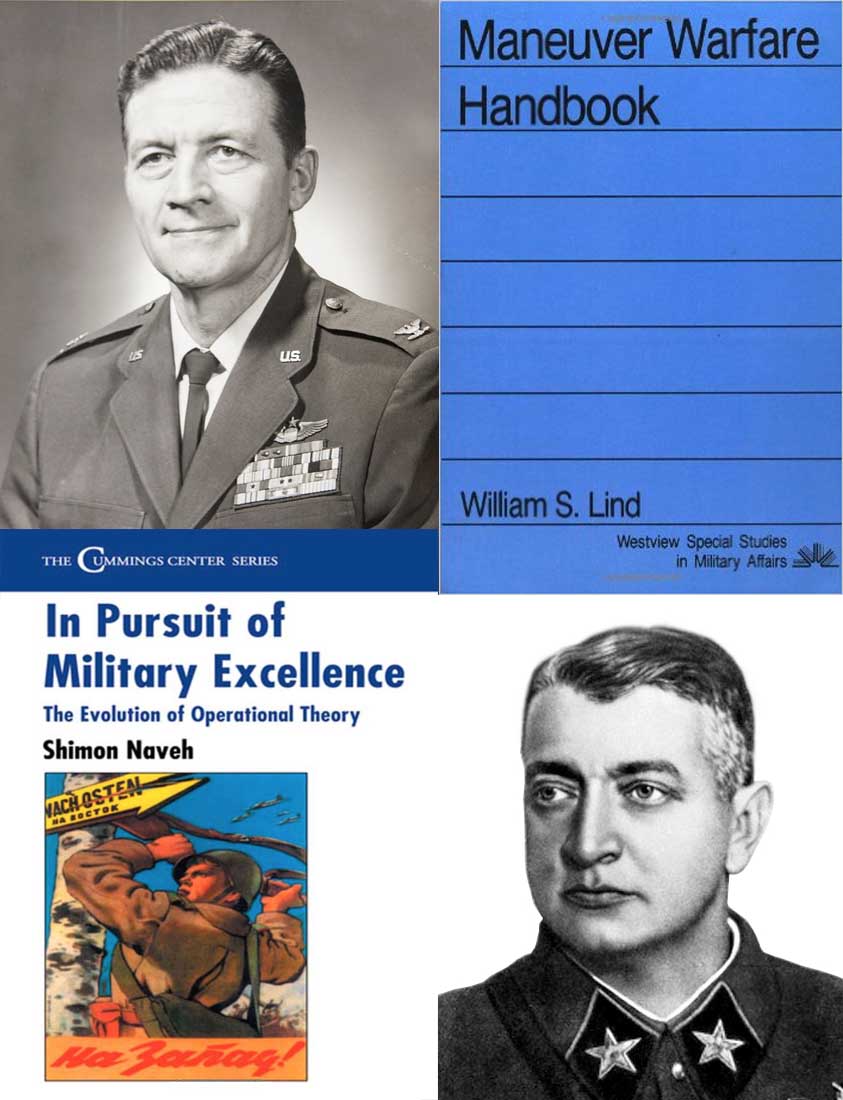Maneuver Warfare: Common Misconceptions (Pt. 1)
“Maneuver Warfare Theory,” commonly associated with Air Force Colonel John Boyd and military historian Bill Lind, has always been a controversial topic. Proponents of Maneuver Warfare are often labeled as mavericks who have trouble conforming to military culture and discipline. In turn, "Maneuverists" often brand their opponents as uncreative micromanagers who can only win with overwhelming firepower. However, such heated debates are often misguided and founded on misunderstanding. Several key insights can help illuminate the true nature of Maneuver Warfare.
One of the most common misconceptions about Maneuver Warfare is that its opposite is attrition warfare. Labeling Maneuver Warfare and attrition warfare as opposites does not make logical sense. It is possible to use Maneuver Warfare to accomplish attrition-based objectives. Therefore, the two cannot be antithetical. In fact, some degree of attrition is an inherent part of every combat operation. The true essence of Maneuver Warfare (with a capital “M”) primarily relates to a method of command and control. Therefore, the opposite of Maneuver Warfare must be the opposite method of command and control: Synchronization Warfare.
The basis of Maneuver Warfare is decentralization and empowerment of subordinate leaders to act on individual initiative. The basis of Synchronization Warfare is centralized control and disciplined execution. However, these two opposite command and control methods ultimately seek victory in the same way. All victory on the battlefield stems primarily from two factors: speed and power. In simple terms, there are only two ways to win a fight: hit first, or hit harder and more effectively. Maneuver Warfare and Synchronization Warfare both pursue these same goals in different ways.
Speed in Maneuver Warfare comes from decentralized execution and subordinate initiative. The Maneuver Warfare force beats the enemy to the punch by allowing subordinates to act immediately and decisively without wasting time seeking higher approval for each action. The Maneuver Warfare force achieves power superiority (whether manpower, firepower or combat-power) only locally. By definition, a decentralized command structure moving in multiple columns cannot mass to achieve overall superiority. Rather, by using “recon pull” a Maneuver Warfare force can identify weak-points in the enemy lines and then use superior agility to quickly mass power at those points, achieving local superiority and facilitating a breakthrough.
Speed in Synchronization Warfare comes from highly synchronized and disciplined execution. While initiative and creativity are not paramount, a force can still potentially outpace an adversary if the military machine runs flawlessly. Synchronization Warfare achieves power superiority by synchronized massing of combined arms capabilities on the largest possible scale. A Synchronization force will often have large, centralized staffs employing a complex system of control measures, timelines, execution checklists and matrices.
While both methods are ultimately about achieving superiority in speed and power, the historical record shows that the Maneuver Warfare approach is clearly superior for one key reason: the inherent uncertainty of warfare. If nothing ever went wrong on the battlefield and events always proceeded as planned, the Synchronization Warfare force would win every time. However, this is never the case and thus, when things go wrong, the Maneuver Warfare force gains a tremendous advantage due to its superior adaptability. In reality, not only is a Synchronization Warfare force less flexible and adaptable, but frequently the better a force gets at synchronization the less adaptable it becomes.
However, if Maneuver Warfare is clearly superior, why would a force ever employ Synchronization Warfare? There is indeed a reason. The central challenge of Maneuver Warfare is getting all of its decentralized pieces to function in harmony. Military historian Bill Lind in his Maneuver Warfare Handbook suggests that certain principles such as mission command and the Schwerpunkt (focus point) provide the “glue” that holds Maneuver Warfare together.[1] While Lind’s statements are not wrong, the more fundamental factor that makes Maneuver Warfare work is much simpler: training. Some writers have claimed that trust is the essential ingredient for Maneuver Warfare and while this is also true, trust, by definition must be earned and it can only be earned through effective training, either on or off the battlefield.
Many forces are simply not capable of executing Maneuver Warfare because they are not trained for Maneuver Warfare. Allowing a highly-trained, competent subordinate to act on his own initiative will likely bring good results. Empowering poorly-trained and incompetent subordinates will likely lead to chaos. Thus, units that do not place great emphasis on training for Maneuver Warfare are better off using Synchronization. It is also not possible to simply “convert” a Synchronization Warfare force into a Maneuver Warfare force by changing tactics, procedures and policies. Rather, an effective transition to Maneuver Warfare requires extensive reforms not only in training methods but in organizational culture.
FURTHER READING: For a short and simple explanation of Maneuver Warfare see The Maneuver Warfare Handbook, by Bill Lind. For an explanation of the historical roots and logic behind Synchronization Warfare see In Pursuit of Military Excellence by Shimon Naveh. While the Special Tactics Staff believes both books have some flaws, they provide good background for the discussion. Later in the month, Part 2 of this article will provide additional insights on Maneuver Warfare and Synchronization Warfare.
[1] William Lind, Maneuver Warfare Handbook, (Boulder: Westview 1985), Kindle Location 437





